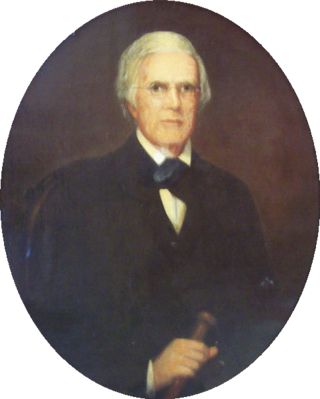Top Qs
Timeline
Chat
Perspective
Joseph Thorpe Elliston
American silversmith From Wikipedia, the free encyclopedia
Remove ads
Joseph Thorpe Elliston (1779 – November 10, 1856) was an American silversmith, planter and politician. He served as the fourth mayor of Nashville, Tennessee, from 1814 to 1817. He owned land in mid-town Nashville, on parts of modern-day Centennial Park, Vanderbilt University, and adjacent West End Park.
Remove ads
Early life
Elliston was born in 1779 in Culpeper, Virginia.[1][2] He moved to Lexington, Kentucky, where he was trained as a silversmith by Samuel Ayers from 1795 to 1798,[2] when he moved to Nashville, Tennessee.[3]
Career
Summarize
Perspective
Elliston began his career as a silversmith in Nashville in 1798.[1] He was the owner of a store on the corner of Union Street and 2nd Avenue in modern-day Downtown Nashville, which he ran with his nephew, also called John Elliston.[1] The store burnt down in March 1814, but he opened a new one shortly after.[1] He designed cutlery for President Andrew Jackson, which later became part of the collection of The Hermitage.[1] He also designed jewelry with silver and gold.[1]
In 1811, Elliston purchased 208 acres for $11,435.75 in mid-town, from "what is now 20th Avenue to a line covering part of Centennial Park, and from a line well within the Vanderbilt campus today to Charlotte Avenue."[1] He subsequently purchased 350 acres "along what is now Murphey Road, including the Acklen Park [West End Park] area."[1] It ran across West End Avenue, which had not yet been built.[3] Elliston built a small house, and he named it Burlington "after the Elliston homestead in Kentucky."[4] The house stood on modern-day Elliston Place.[5][6]
Elliston as a city alderman from 1806 to 1814.[1] He served as the fourth mayor of Nashville from 1814 to 1817.[2] He also served on the committee for the construction of the Tennessee State Capitol,[3] and he was a co-founder of the Nashville Female Academy and the McKendree Methodist Church.[1][2]
Remove ads
Personal life, death and legacy
Elliston married Louisa Mullen on August 20, 1800. They had two sons, William and Joseph, and three daughters, Jane, Harriet and Adeline.[7] She predeceased him in 1816,[8] and Elliston married Elizabeth Odom,[7] widow of Charles Elliott and Rev. Learner Blackman. They resided on Sixth Avenue in Downtown Nashville, where the Tennessee Performing Arts Center was later built.[1] His son-in-law, Alexander Little Page Green, was a Methodist minister.[1]
Elliston died on November 10, 1856, in Nashville.[2][8] His funeral was conducted by John Berry McFerrin at the McKendree United Methodist Church.[8] He was first buried in the Nashville City Cemetery and later in the Mount Olivet Cemetery.[2]
Elliston's son William R. Elliston married Elizabeth Boddie, a granddaughter of his stepmother,[7] inherited the Burlington plantation, and served as a member of the Tennessee House of Representatives. Elliston's portrait, done by Washington Bogart Cooper, is in the Nashville Public Library.[2]
Further reading
- Caldwell, Benjamin Hubbard (1988). Tennessee Silversmiths. Winston-Salem, N.C.: Museum of Early Southern Decorative Arts. ISBN 9780945578017. OCLC 837245410.
References
External links
Wikiwand - on
Seamless Wikipedia browsing. On steroids.
Remove ads

